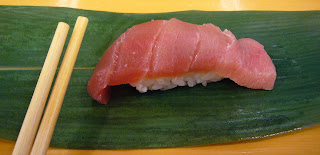Suwon
The Hwaseong Fortress in Suwon was constructed between 1794 and 1796 and is deserving of its status as a UNESCO World Cultural Heritage Site. Except for the south gate, which is in the middle of a traffic circle, the fortress walls are continuous for about 5 km.
 Paldalmun: the South Gate
Paldalmun: the South Gate
 Bell of Filial Piety: 3 rings for a dollar. The first ring shows gratitude to one's parents. The second ring wishes good health to one's family. The third ring is for the realization of one's dreams. Approximately 12.5 tons
Bell of Filial Piety: 3 rings for a dollar. The first ring shows gratitude to one's parents. The second ring wishes good health to one's family. The third ring is for the realization of one's dreams. Approximately 12.5 tons
 Hwaseomun: one of the four principle gates
Hwaseomun: one of the four principle gates
 Boksumun: floodgate
Boksumun: floodgate

 Bonus picture: cute Korean kid
Bonus picture: cute Korean kid
We also got to try traditional Korean archery with a bunch of kids ($1/5 shots). Michael and I were the only ones in our group to successfully hit the target.
We ended our day trip with galbi (Korean bbq) since Suwon is famous for its seasoned galbi.
 Galbi: cooked over charcoals at the table. Normally, someone at the table takes charge of turning and cutting the meat (with kitchen scissors), but one of the servers did that for us here.
Galbi: cooked over charcoals at the table. Normally, someone at the table takes charge of turning and cutting the meat (with kitchen scissors), but one of the servers did that for us here.
 Pajeon: Korean pancake with carrots, spring onions and squid, normally served with a soy dipping sauce.
Pajeon: Korean pancake with carrots, spring onions and squid, normally served with a soy dipping sauce.
 Tofu (very creamy texture)
Tofu (very creamy texture)
We go out for galbi regularly in Cheongju and it's 7,000 Won per person (~$7). At this restaurant (recommended by our guidebook), the galbi was 28,000 Won per person- yikes! We were able to order just two portions and that was more than sufficient for the three of us. The meat was a higher quality than what we normally get and it was quite good. We were served a nice array of side dishes, including three different kinds of salad and a tofu seafood soup. After we finished eating, the server brought us chilled sweet fruit tea which was a nice way to finish the meal.
After our successful and enjoyable outing, we're more motivated and excited about our upcoming trips. I'm feeling pleasantly optimistic about all this domestic travel!
The Hwaseong Fortress in Suwon was constructed between 1794 and 1796 and is deserving of its status as a UNESCO World Cultural Heritage Site. Except for the south gate, which is in the middle of a traffic circle, the fortress walls are continuous for about 5 km.
 Paldalmun: the South Gate
Paldalmun: the South Gate Bell of Filial Piety: 3 rings for a dollar. The first ring shows gratitude to one's parents. The second ring wishes good health to one's family. The third ring is for the realization of one's dreams. Approximately 12.5 tons
Bell of Filial Piety: 3 rings for a dollar. The first ring shows gratitude to one's parents. The second ring wishes good health to one's family. The third ring is for the realization of one's dreams. Approximately 12.5 tons Hwaseomun: one of the four principle gates
Hwaseomun: one of the four principle gates Boksumun: floodgate
Boksumun: floodgate
 Bonus picture: cute Korean kid
Bonus picture: cute Korean kidWe also got to try traditional Korean archery with a bunch of kids ($1/5 shots). Michael and I were the only ones in our group to successfully hit the target.
We ended our day trip with galbi (Korean bbq) since Suwon is famous for its seasoned galbi.
 Galbi: cooked over charcoals at the table. Normally, someone at the table takes charge of turning and cutting the meat (with kitchen scissors), but one of the servers did that for us here.
Galbi: cooked over charcoals at the table. Normally, someone at the table takes charge of turning and cutting the meat (with kitchen scissors), but one of the servers did that for us here. Pajeon: Korean pancake with carrots, spring onions and squid, normally served with a soy dipping sauce.
Pajeon: Korean pancake with carrots, spring onions and squid, normally served with a soy dipping sauce. Tofu (very creamy texture)
Tofu (very creamy texture)We go out for galbi regularly in Cheongju and it's 7,000 Won per person (~$7). At this restaurant (recommended by our guidebook), the galbi was 28,000 Won per person- yikes! We were able to order just two portions and that was more than sufficient for the three of us. The meat was a higher quality than what we normally get and it was quite good. We were served a nice array of side dishes, including three different kinds of salad and a tofu seafood soup. After we finished eating, the server brought us chilled sweet fruit tea which was a nice way to finish the meal.
After our successful and enjoyable outing, we're more motivated and excited about our upcoming trips. I'm feeling pleasantly optimistic about all this domestic travel!
































































